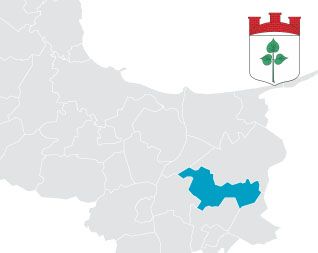Town and Municipality of Nowy Staw

| Residents/Population: | 7 990 |
|---|---|
| Area: | 11 430 km2 |
| Expenditure per capita: | 3 812 zł |
| Website: | www.nowystaw.pl |
| Rulers/Leaders: | |
| Jerzy SzałachBurmistrz | Waldemar KalinowskiLeader of the City Council |
The first settlers who came to what is today the urban/rural Nowy Staw several hundred years ago would have discovered the special properties of the land which reaps bountiful harvests. These days the lives of the residents of the town and municipality of Nowy Staw are concentrated around the Święta river and a large proportion still depend on farming. Nowy Staw has developed along with Nowy Dwór Gdański and Malbork to become the support and service centre for the Zulawski Agricultural Region.
The town and municipality of Nowy Staw is located in the northern part of Poland near the coast and within the Żuławy Wysokie, which covers most of the area above sea level. The municipality is directly adjacent to the Nogat river about 7 km away in the eastern part of the area while in the town itself flow the Święta river and its tributaries. Thanks to the numerous water reservoirs and drainage channels Nowy Staw has excellent soil, which belongs to the most fertile in Pomerania.
Part of the municipality lies within the Nogat River Protected Countryside Area and is part of an ecological system of designated areas designed to protect the landscape and most precious natural elements of the land as a refuge for birds and small mammals in Żuławy.
In archaeological finds there are traces of settlement in the municipality from as far back as the tenth century. In the Middle Ages these lands belonged to the Pomeranian dukes, then the Teutonic Knights and then the Polish Crown. Nowy Staw received civic rights in 1343. In subsequent decades, Polish kings bestowed privileges on the city and in the second half of the sixteenth century, the last of the Jagiellonian dynasty, King Sigismund Augustus, authorized the construction of new mills, weirs and bridges in Nowy Staw. The city has historically been known for the production of gunpowder, a functioning mill still exists here, and then the trade of grain and a famous horse market. Since 1818 the town has belonged to the county of Malbork. As a result of the Treaty of Versailles in 1920, the city (then known as Neutech ) was incorporated into the territory of the Free City of Danzig.
Despite the turbulent history of Nowy Dwór some unique relics of the past have survived which include an end of terrace house with neo-Gothic façades on Mickiewicz street, the largest church in the Żuławy, St. Matthew’s, a three-nave basilica dating from before 1400 and a formerly Evangelical Neo-Gothic church from 1803-1804.
Despite a modest population Nowy Staw offers numerous attractions. In the centre is the Nowostawski Cultural Centre, which organizes workshops, regular interest groups, hobby clubs and cherishes the traditions of folklore. Shortly the new Gallery Żuławska will be opened in the adapted surrounds of the former Evangelical church in the centre of the town on Kościuszki Market Square. This large project, which is one of many, will see the renovation and adaption of the former place of worship to serve as a cultural and exhibition centre, and is currently in progress. August sees the town visited by crowds of motorcycle enthusiasts for the Nowy Staw Motorcycle Night and heavy rock fans forthe ‘Metal Time’ festival. Every summer many locals and tourists are attracted to the area to kayak on the Święta river.
